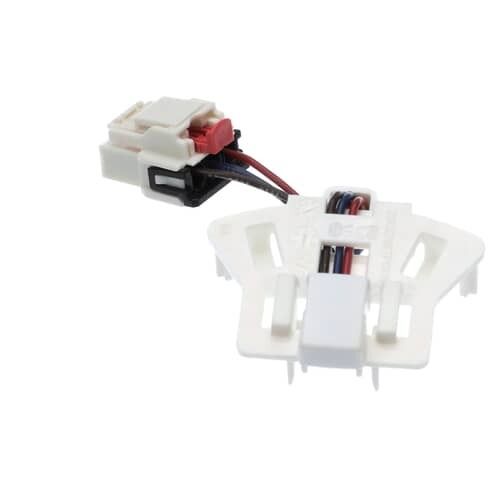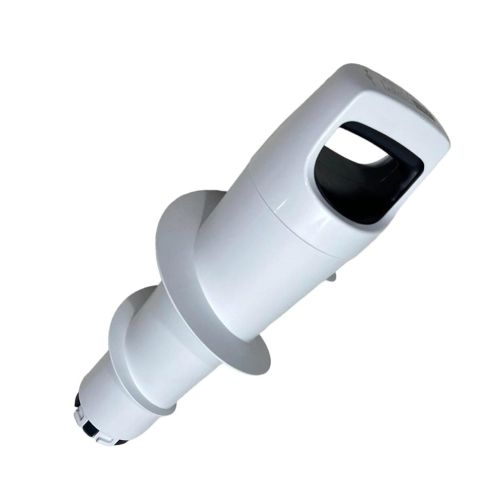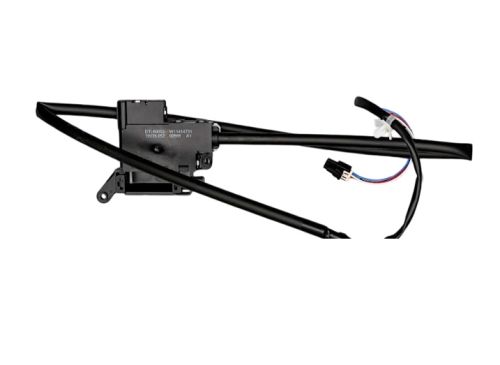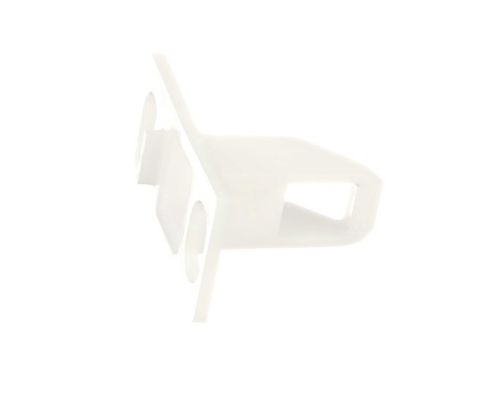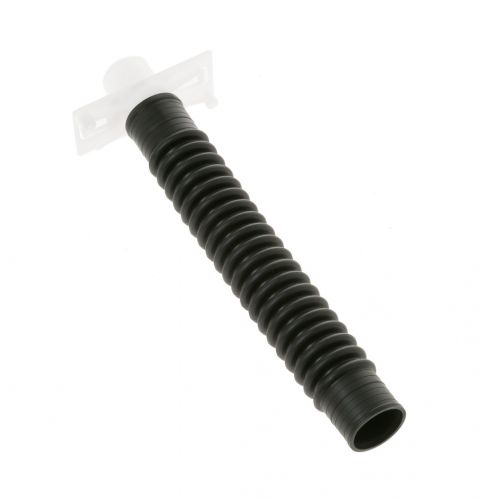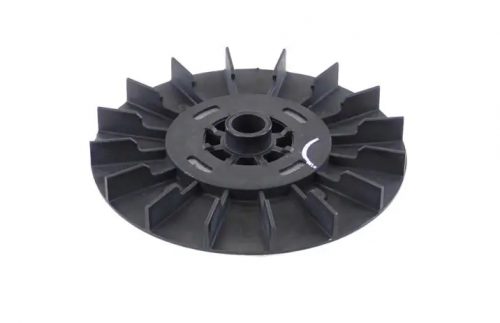
The Future of Laundry: Innovative Washers and Dryers in 2024
In modern home appliances, the laundry room stands as a realm where innovation and technology converge to redefine the way we approach the age-old task of washing and drying our clothes. As we set our sights on the best washing machines 2024, the future of laundry unveils a horizon adorned with cutting-edge advancements in washers and dryers, promising efficiency, convenience, and functionality like never before. Join us on a journey through the realm of innovation as we explore the top-of-the-line washers and dryers that are set to revolutionize the laundry experience in 2024. From smart connectivity to energy efficiency and beyond, these appliances offer a glimpse into a future where laundry day is no longer a chore but rather a seamless blend of technology and convenience.
| Table of contents: Importance of laundry appliances in everyday life What are some innovative features of modern washers? Key advancements in dryer technologies Compact and space-saving washer-dryer combos Reducing the environmental impact of laundry appliances Tips for maintaining modern washers and dryers Advantages of AI and automation in laundry Future trends in laundry technology Top-rated washer and dryer models of 2024 |
Importance of Laundry Appliances in Everyday Life
Laundry appliances are pivotal in everyday life, offering convenience, efficiency, and essential support in maintaining clean and hygienic clothing and linens. These appliances have become indispensable in modern households, streamlining the laborious task of washing and drying clothes. By automating and optimizing the laundry process, washers and dryers save valuable time and effort, allowing individuals to focus on other responsibilities and activities. The convenience offered by these appliances not only enhances the quality of life but also promotes hygiene, health, and overall well-being by ensuring that clothes and linens are cleaned effectively. Furthermore, laundry appliances contribute to the organization and efficiency of daily routines, enabling individuals to manage their households more effectively and enjoy fresh, clean clothes effortlessly.
What are some innovative features of modern washers?
Energy efficiency
- Modern washers incorporate advanced technologies such as sensor-based load detection, variable speed motors, and improved insulation to minimize energy consumption during operation.
- The emphasis on eco-friendly washing machines lies in reducing water and electricity usage, resulting in lower utility costs and a decreased environmental impact.
Smart connectivity
- Washers with smart connectivity seamlessly integrate with smart home ecosystems, allowing users to control and monitor their machines remotely through smart assistants or dedicated mobile apps.
- Users can receive notifications, set custom wash cycles, and adjust settings from anywhere, enhancing convenience and enabling better time management.
- Example: The Samsung SmartThings-enabled washer allows users to control and monitor washing cycles from their smartphones using the SmartThings app. Users can start or stop cycles, receive alerts, and customize settings remotely for added convenience.
Advanced washing technologies
- Some modern washers utilize ultrasonic cleaning technology, which harnesses ultrasonic waves to dislodge dirt and stains from fabrics effectively, offering a deeper clean.
- AI-powered washers analyze load types and adjust washing parameters accordingly, optimizing water usage and cycle duration for superior cleaning results.
- Example: The LG Signature Washer with TurboWash 360 technology uses ultrasonic waves to deeply clean clothes without the need for agitators. This innovative feature ensures a thorough cleaning while being gentle on fabrics, delivering excellent washing results.
Water recycling and purification
- Systems that recycle and purify water for washing: Innovative washers integrate water recycling and purification systems to minimize water wastage, promoting sustainable practices and reducing the environmental footprint of laundry tasks.
- Example: The EcoBubble technology in Samsung washers creates a powerful bubble wash that penetrates fabrics quickly, allowing for effective cleaning even at lower temperatures. This feature helps save energy by reducing the need for hot water, making the washing process more environmentally friendly.
Key advancements in dryer technologies
Heat pump dryers
- Heat pump dryers offer significant advantages, including lower energy consumption, gentler drying at lower temperatures, and the ability to be installed in a wider range of locations due to their lack of need for external venting. By recycling heat, heat pump dryers consume less energy, contributing to reduced utility bills and a smaller ecological footprint compared to traditional vented dryers.
Steam refresh cycles
- Eliminating wrinkles and odors with steam: innovative dryers equipped with steam refresh cycles use steam to refresh and de-wrinkle clothing, eliminating odors and reducing the need for ironing or rewashing garments. Steam helps to relax and gently smooth out fabrics without subjecting them to the heat of a full drying cycle, thereby extending the lifespan of clothing and preserving fabric quality.
Sensor technology
- Dryers with moisture and temperature sensors: Sensor-equipped dryers can detect the moisture content and temperature within the drum, allowing for precise and automatic adjustments to the smart drying cycle. This technology ensures that clothes in washing machines are automatically dried to the desired level of dryness, preventing over-drying and reducing the risk of damage to fabrics.
Noise reduction and vibration control
- Revolutionary dryers incorporate advanced noise reduction and vibration control measures, providing quieter operation and minimizing disturbance within the home environment.
Refer: How To Clean A Dryer: 9 Easy Steps
Compact and space-saving washer-dryer combos:
- Compact and space-saving washer-dryer combos are designed to efficiently utilize limited space in urban dwellings, apartments, or smaller laundry rooms.
- These integrated units offer the convenience of both washing and drying functions in a single appliance, eliminating the need for separate machines and optimizing floor space.
- The compact design of these combos ensures that users can enjoy the benefits of full laundry cycles without compromising on performance or efficiency.
- Modern washers and dryers are increasingly designed to seamlessly integrate with modular and smart home designs, offering a harmonious blend of functionality and aesthetics.
- The sleek and contemporary designs of these appliances complement various interior styles, whether traditional, minimalist, or futuristic.
- The integration with smart home systems allows for enhanced connectivity, enabling users to control and monitor their laundry appliances in line with the overall smart ecosystem of their homes.
Reducing the environmental impact of laundry appliances
The manufacturing of modern laundry appliance parts & accessories increasingly incorporates eco-friendly materials such as recycled plastics, sustainable metals, and energy-efficient components. By using these materials, appliance manufacturers aim to reduce the environmental impact of production processes and contribute to a more sustainable supply chain.
Laundry appliances, including washers and dryers, have a significant impact on environmental sustainability due to their water and energy consumption throughout their lifecycle. The incorporation of energy-efficient technologies, water-saving features, and sustainable materials in modern appliances seeks to minimize this impact, promoting eco-conscious usage and reducing the overall environmental footprint of laundry tasks.
Tips for maintaining modern washers and dryers
- Regularly clean the detergent and fabric softener compartments.
- Keep the washer door ajar after use to prevent mold and mildew buildup.
- Clean the dryer lint filter before each use to maintain efficiency and prevent fire hazards.
- Schedule professional maintenance checks to ensure optimal performance and longevity.
- With proper maintenance and care, washer and dryer parts can have a lifespan of around 10-15 years, depending on usage and maintenance practices.
- Investing in quality appliances and following manufacturer-recommended maintenance procedures can extend the lifespan of these appliances, providing reliable performance for years to come.
Checkout: How To Clean Washing Machine: Ultimate Guide
Advantages of AI and Automation in Laundry
The role of AI and automation in the realm of laundry appliances is becoming increasingly significant, offering consumers advanced functionalities and streamlined laundry experiences.
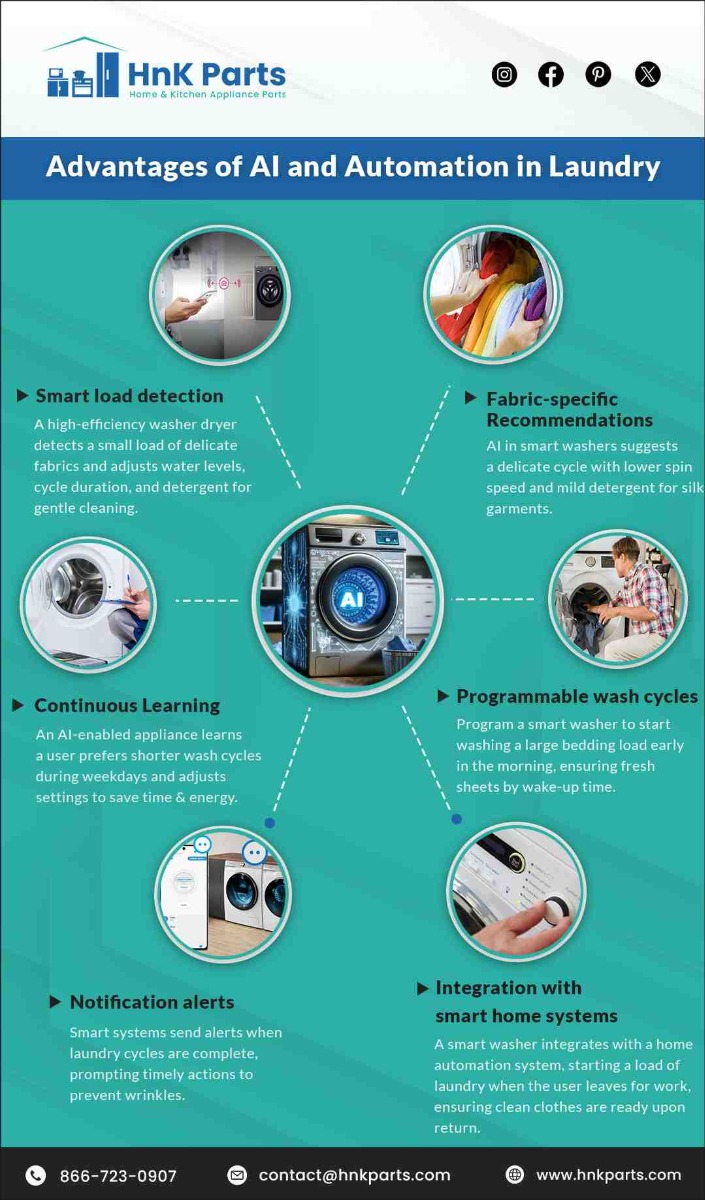
Future Trends in Laundry Technology
The future of laundry washer-dryer technology is poised to undergo significant advancements with the integration of IoT (Internet of Things) and its alignment with smart city initiatives.
- IoT integration in washers and dryers: Laundry appliances are expected to be equipped with IoT capabilities, enabling remote monitoring, control, and diagnostics of washing and drying cycles. Users may access and manage their appliances from their smart devices, optimizing the laundry process for convenience and energy efficiency.
- Smart maintenance and predictive analytics: IoT-enabled washers and dryers could leverage predictive analytics to monitor usage patterns, detect potential malfunctions, and alert users or service providers for proactive maintenance. This capability can enhance appliance longevity and minimize downtime.
- Data-driven customization and recommendations: IoT-enabled appliances may utilize user data and machine learning algorithms to offer personalized cycle recommendations, fabric care tips, and detergent usage guidance, catering to individual lifestyle preferences and garment care needs.
- Integration with smart grid and home energy management systems: Future laundry appliances are anticipated to engage with smart grid technologies and home energy management systems, enabling optimised scheduling of laundry cycles based on energy tariffs and grid load conditions.
- Environmental sensing and air quality improvement: IoT-enabled appliances may incorporate sensors to detect environmental factors, such as humidity and air quality, to adjust drying cycles and contribute to indoor air quality management within smart city contexts.
Top-Rated Washer and Dryer Models of 2024
|
Model |
Key Features |
|
LG Smart Wi-Fi Enabled Front Load Washer and Dryer set |
Smart Wi-Fi connectivity, advanced cleaning technologies, and efficient drying capabilities |
|
Insignia NS-TWM35W1 & NS-TDRE67W1 |
Essential functions at a budget-friendly price |
|
LG WashTower Laundry Center |
Vertical unit combining washer and dryer for space optimization |
|
Electrolux Smartboost Front-Load Washer and Dryer, Stackable |
Smart technology, efficient washing and drying in a stackable design |
|
Whirlpool washer and dryer WTW200HW & LDR3822PQ |
High-capacity with excellent cleaning and drying performance |
Whirlpool Smart Top Load Washer with 2-in-1 Removable Agitator |
Smart connectivity and versatile washing options with removable agitator |
|
LG SIGNATURE WM9500HKA & DLEX9500K |
Compact washer and dryer combo suitable for smaller spaces |
|
Samsung Smart Front-Load Washer & Stackable Gas Dryer |
High-efficiency design optimising water and energy usage |
|
Electrolux ELFW7537AW Front Load Washer & ELFG7537AW Dryer |
Energy-saving features with advanced washing and drying technologies |
HnKParts is your one-stop solution for all home appliance needs, offering a vast selection of washing machine parts and washer replacement parts.
FAQs
Can a Samsung dryer work with a larger gas line size?
Yes, a Samsung dryer gas line size is designed for a 3/8-inch can also operate with a larger gas line size, like a 1/2-inch line. The larger size can accommodate higher gas flow rates.
What is the largest size washer available?
The largest washing machines commonly available for residential use are around 5.0 cubic feet in capacity. Some commercial models may offer capacities of up to 6.0 cubic feet or more.
What role does AI play in modern washers and dryers?
AI technology enables machine learning for optimized wash and dry cycles, auto-detection of fabric types, and predictive maintenance to prevent breakdowns.


